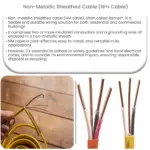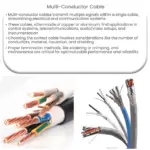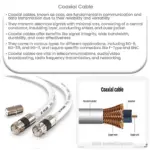Explore the 5 most common types of electrical cables, including NM, BX, UTP, coaxial, and multi-conductor, their uses and significance.
Understanding the 5 Most Common Types of Electrical Cables
Electrical cables are fundamental to various applications, from simple home electronics to complex industrial machinery. While there are many types of electrical cables, we are going to focus on the five most common ones used across various fields.
1. Non-Metallic Sheathed Cable (NM Cable)
Non-Metallic Sheathed Cable, also known as Romex cable or NM cable, is predominantly used in residential settings for interior wiring. It consists of a plastic outer sheathing that envelops two or more insulated conductors, along with a bare grounding wire. The color of the outer sheath often indicates the cable’s gauge or purpose.
2. Armored Cable (BX Cable)
Armored cables, often referred to as BX cables, come with a flexible metal sheathing that protects the inner insulated wires, making them more durable. They are a standard option in commercial buildings due to their high resilience to heat and mechanical damage.
3. Unshielded Twisted Pair (UTP) Cable
Commonly used for networking applications, UTP cables contain pairs of twisted wires. These pairs are twisted together to help minimize interference, making them suitable for Ethernet, telecommunication, and video applications. Category 5e (CAT5e) and Category 6 (CAT6) are the most popular UTP cables.
4. Coaxial Cable
Coaxial cables are the preferred option for TV and internet connections. They consist of an inner conductor, an insulating layer, a metal shield, and an outer insulating layer. The unique design reduces signal loss, interference, and degradation, ensuring high-quality video and internet services.
5. Multi-Conductor Cable
Multi-conductor cables contain multiple conductors, each with its own insulation. They are extensively used in audio systems, control systems, and communications. The number of conductors can vary depending on the application, and each conductor can carry different signals independently.
In conclusion, these five types of electrical cables are the backbone of many modern technologies. From home appliances to complex network systems, they facilitate the transmission of power and signals, making our digital world possible. Understanding their distinct properties and uses is crucial to ensure safe and efficient use.




